IGFBP2 expressing midlobular hepatocytes preferentially contribute to liver homeostasis and regeneration
- PMID: 37146585
- PMCID: PMC10580294
- DOI: 10.1016/j.stem.2023.04.007
IGFBP2 expressing midlobular hepatocytes preferentially contribute to liver homeostasis and regeneration
Abstract
Although midlobular hepatocytes in zone 2 are a recently identified cellular source for liver homeostasis and regeneration, these cells have not been exclusively fate mapped. We generated an Igfbp2-CreER knockin strain that specifically labels midlobular hepatocytes. During homeostasis over 1 year, zone 2 hepatocytes increased in abundance from occupying 21%-41% of the lobular area. After either pericentral injury with carbon tetrachloride or periportal injury with 3,5-diethoxycarbonyl-1,4-dihydrocollidine (DDC), IGFBP2+ cells replenished lost hepatocytes in zones 3 and 1, respectively. IGFBP2+ cells also preferentially contributed to regeneration after 70% partial hepatectomy, as well as liver growth during pregnancy. Because IGFBP2 labeling increased substantially with fasting, we used single nuclear transcriptomics to explore zonation as a function of nutrition, revealing that the zonal division of labor shifts dramatically with fasting. These studies demonstrate the contribution of IGFBP2-labeled zone 2 hepatocytes to liver homeostasis and regeneration.
Keywords: lineage tracing; midlobular hepatocytes; regeneration; zonation; zone 2.
Copyright © 2023 Elsevier Inc. All rights reserved.
Conflict of interest statement
Declaration of interests H.Z. has a sponsored research agreement with Alnylam Pharmaceuticals, consults for Flagship Pioneering and Chroma Medicines, and serves on the SAB of Ubiquitix. These interests are not directly related to the contents of this paper.
Figures
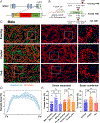
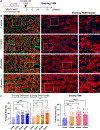
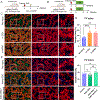
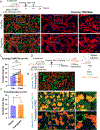
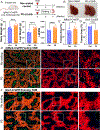

Similar articles
-
Liver homeostasis is maintained by midlobular zone 2 hepatocytes.Science. 2021 Feb 26;371(6532):eabb1625. doi: 10.1126/science.abb1625. Science. 2021. PMID: 33632817 Free PMC article.
-
Self-maintenance of zonal hepatocytes during adult homeostasis and their complex plasticity upon distinct liver injuries.Cell Rep. 2025 Jan 28;44(1):115093. doi: 10.1016/j.celrep.2024.115093. Epub 2024 Dec 24. Cell Rep. 2025. PMID: 39721024
-
AXIN2+ Pericentral Hepatocytes Have Limited Contributions to Liver Homeostasis and Regeneration.Cell Stem Cell. 2020 Jan 2;26(1):97-107.e6. doi: 10.1016/j.stem.2019.10.011. Epub 2019 Dec 19. Cell Stem Cell. 2020. PMID: 31866224
-
Hepatic sinusoids versus central veins: Structures, markers, angiocrines, and roles in liver regeneration and homeostasis.Anat Rec (Hoboken). 2021 Aug;304(8):1661-1691. doi: 10.1002/ar.24560. Epub 2020 Nov 19. Anat Rec (Hoboken). 2021. PMID: 33135318 Review.
-
Liver regeneration: Cellular origin and molecular mechanisms.Liver Int. 2022 Jul;42(7):1486-1495. doi: 10.1111/liv.15174. Epub 2022 Feb 24. Liver Int. 2022. PMID: 35107210 Review.
Cited by
-
Metabolic inflexibility promotes mitochondrial health during liver regeneration.Science. 2024 Jun 14;384(6701):eadj4301. doi: 10.1126/science.adj4301. Epub 2024 Jun 14. Science. 2024. PMID: 38870309 Free PMC article.
-
New insights into liver injury and regeneration from single-cell transcriptomics.eGastroenterology. 2025 Jul 23;3(3):e100202. doi: 10.1136/egastro-2025-100202. eCollection 2025. eGastroenterology. 2025. PMID: 40735115 Free PMC article. Review.
-
Distinct hepatocyte identities in liver homeostasis and regeneration.JHEP Rep. 2023 Apr 24;5(8):100779. doi: 10.1016/j.jhepr.2023.100779. eCollection 2023 Aug. JHEP Rep. 2023. PMID: 37456678 Free PMC article. Review.
-
A prognostic molecular signature of hepatic steatosis is spatially heterogeneous and dynamic in human liver.Cell Rep Med. 2024 Dec 17;5(12):101871. doi: 10.1016/j.xcrm.2024.101871. Epub 2024 Dec 9. Cell Rep Med. 2024. PMID: 39657669 Free PMC article.
-
Genotype-First Approach Identifies an Association between rs28374544/FOG2S657G and Liver Disease through Alterations in mTORC1 Signaling.Genes (Basel). 2024 Aug 21;15(8):1098. doi: 10.3390/genes15081098. Genes (Basel). 2024. PMID: 39202457 Free PMC article.
References
Publication types
MeSH terms
Substances
Grants and funding
LinkOut - more resources
Full Text Sources
Other Literature Sources
Molecular Biology Databases
Miscellaneous

